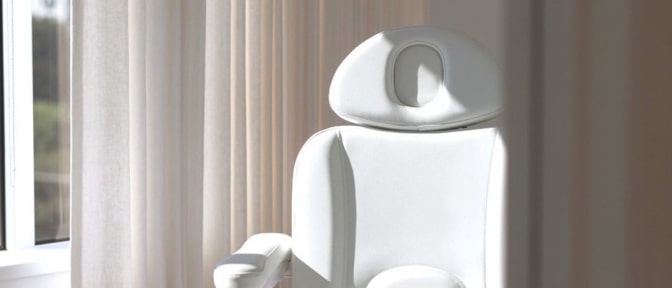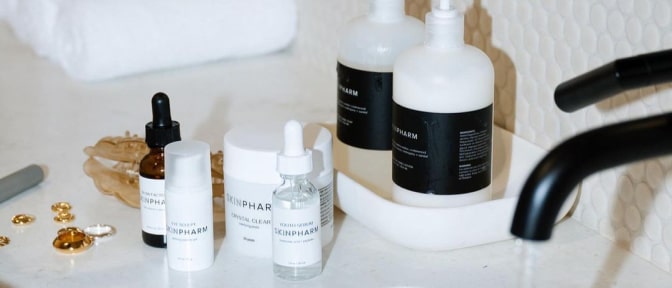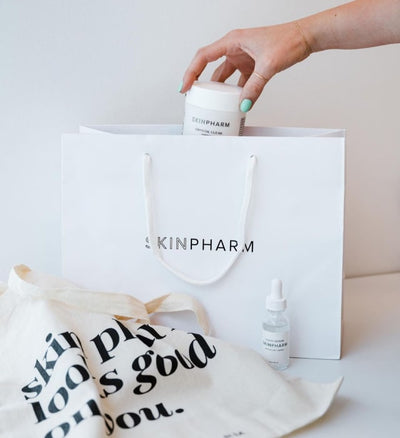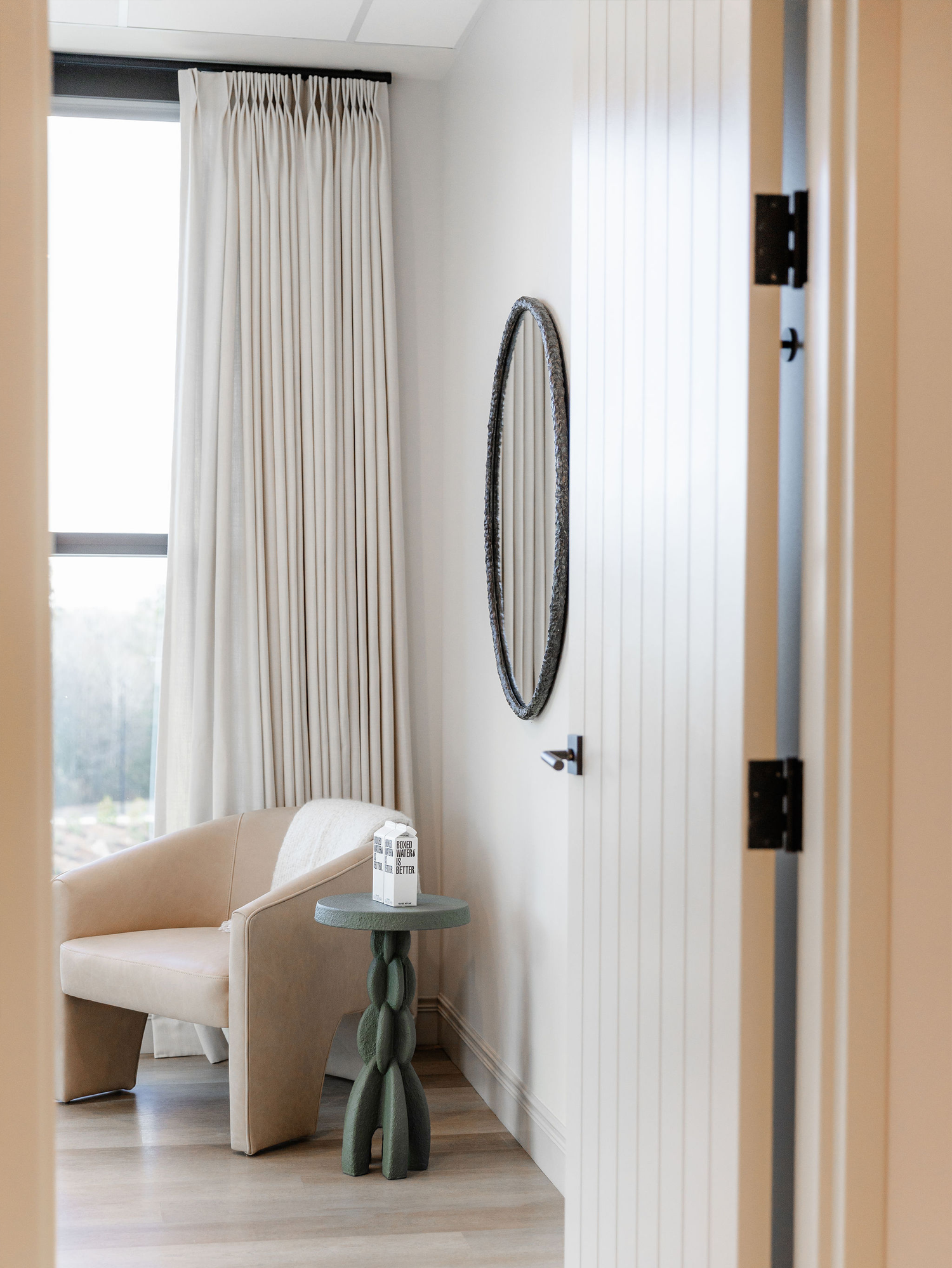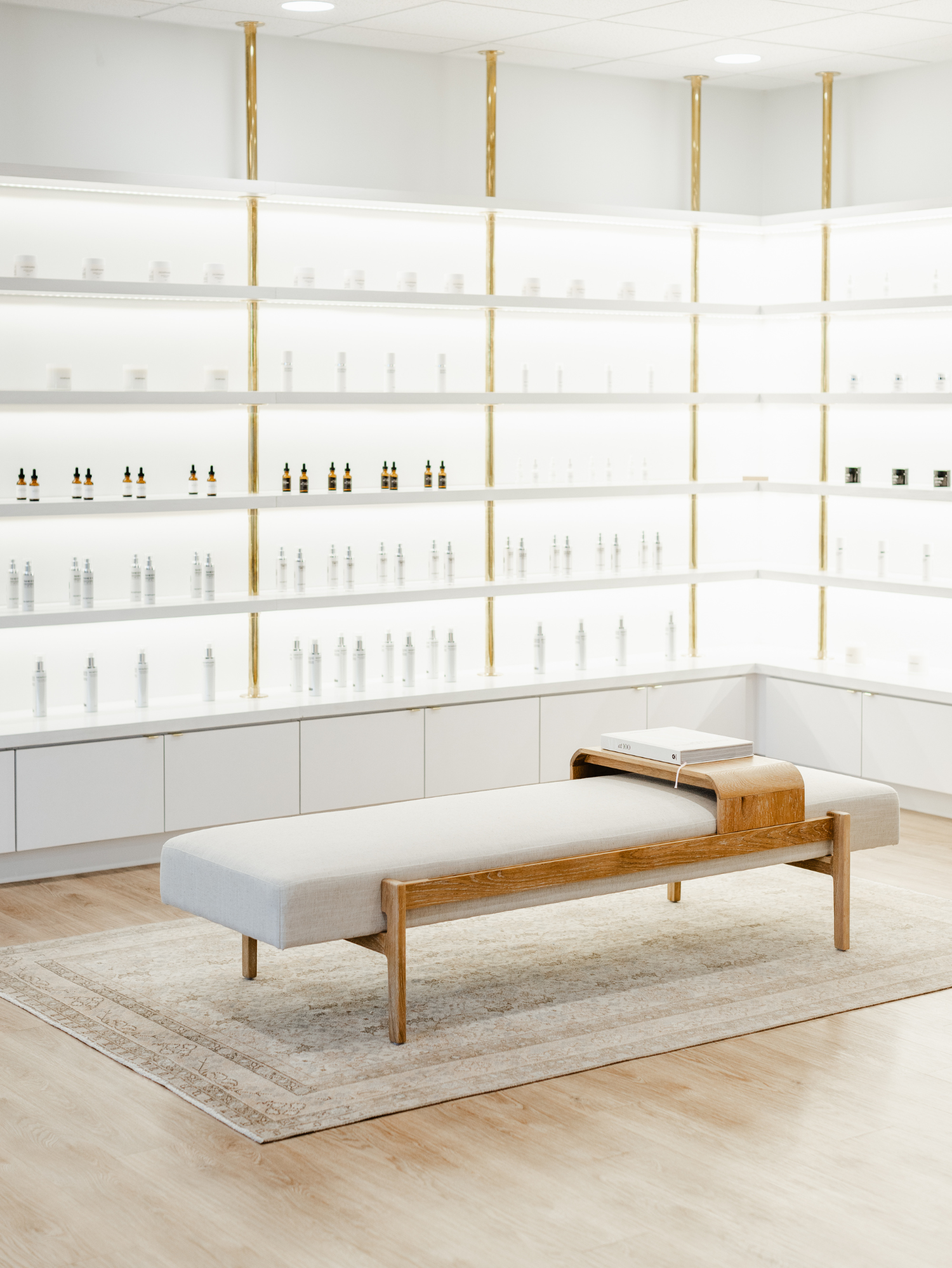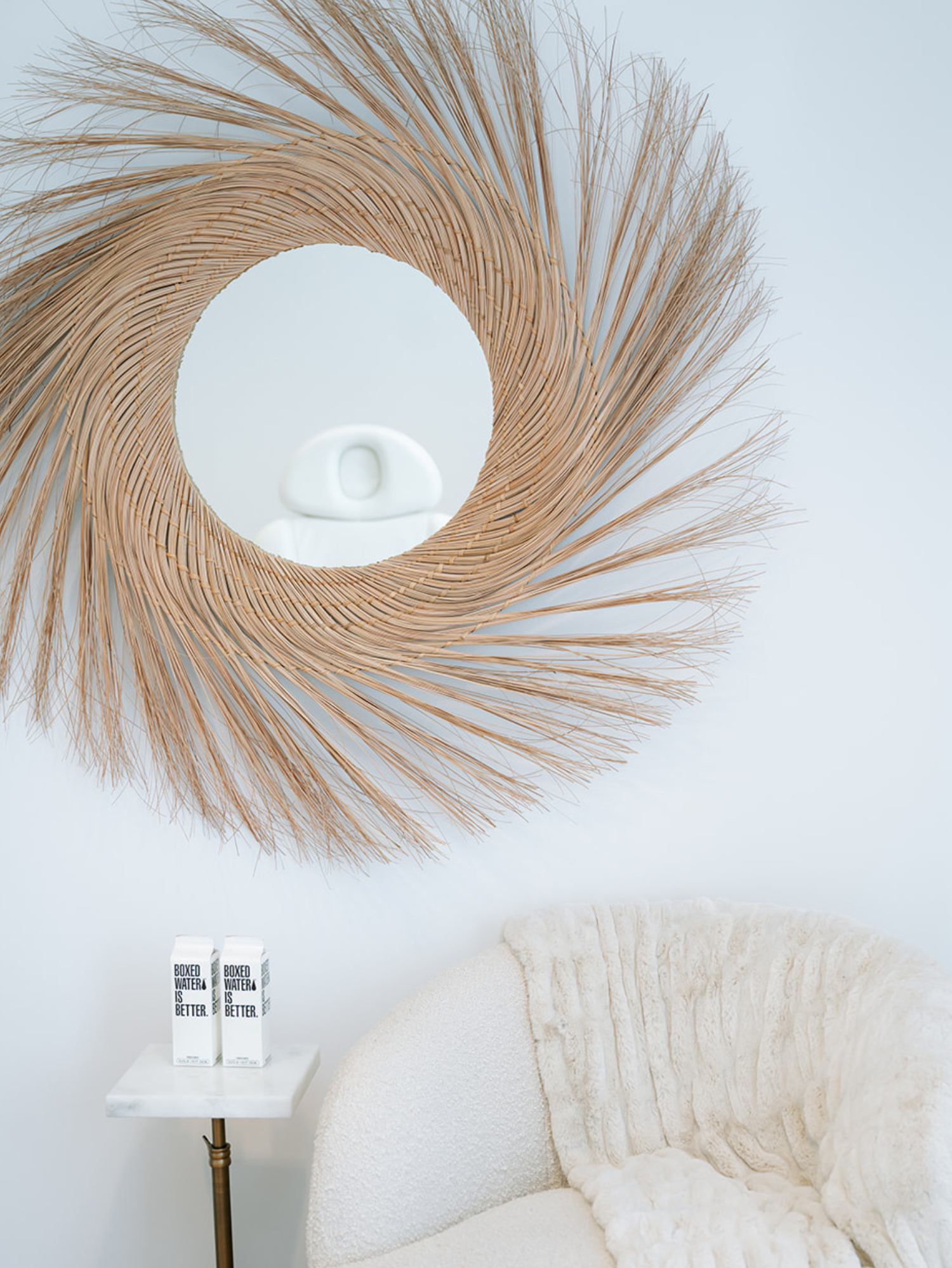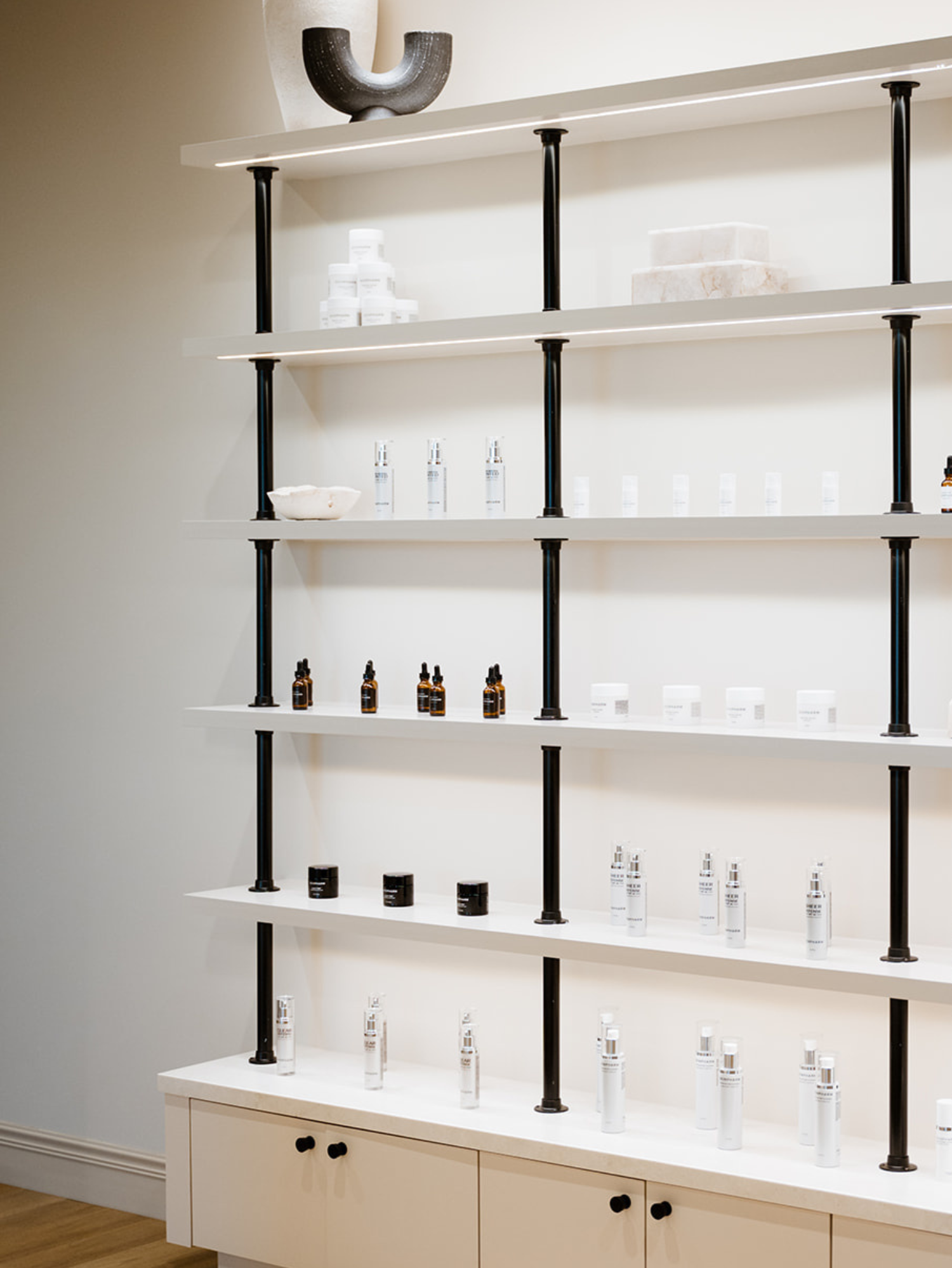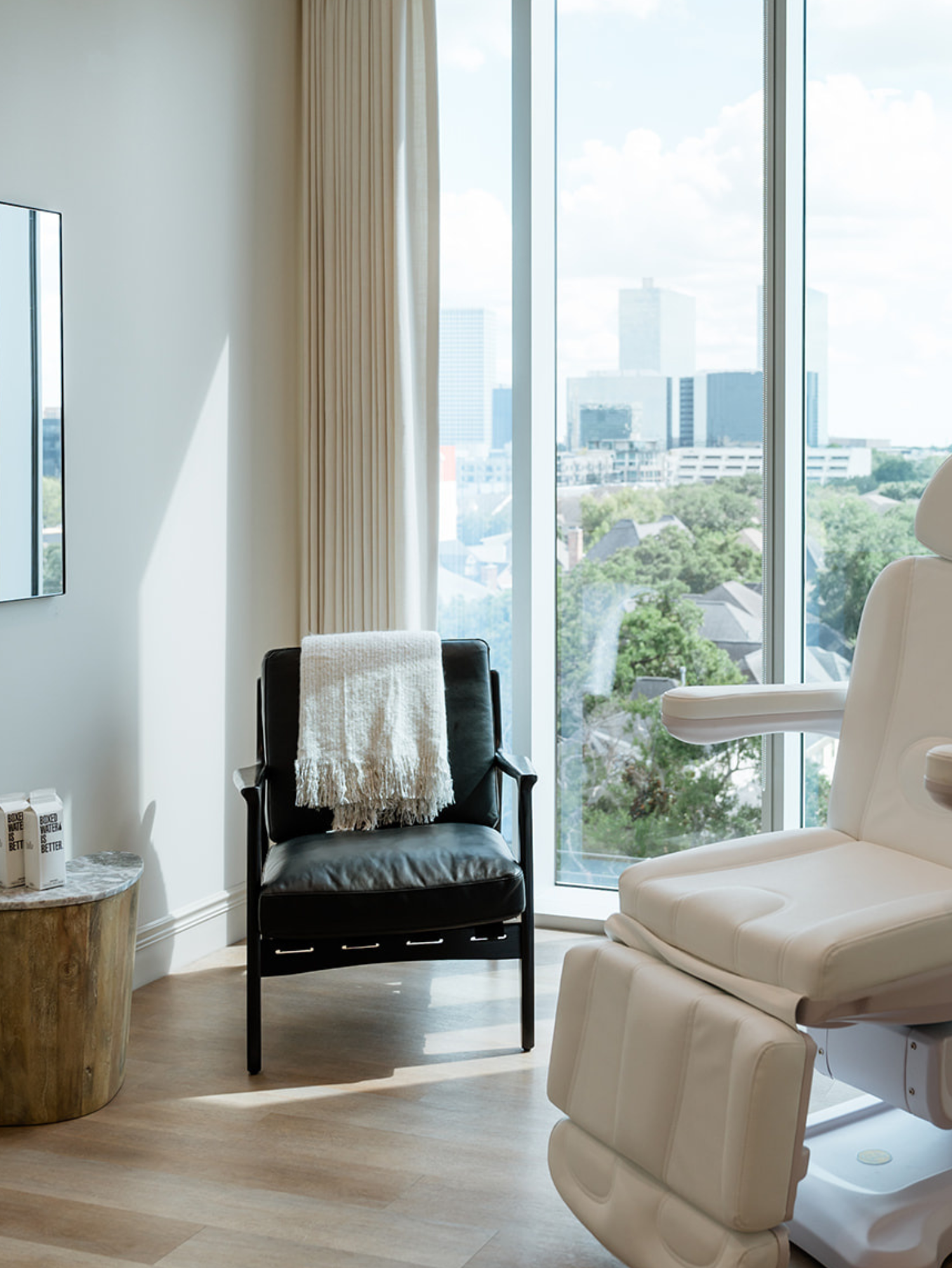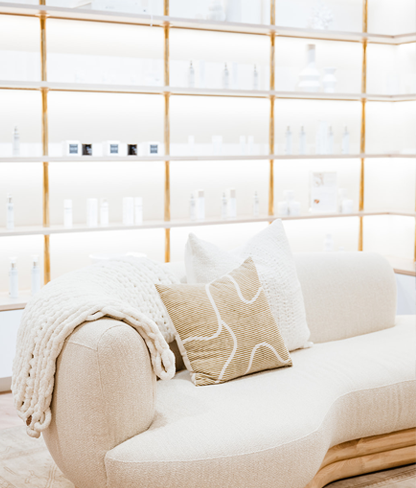Shop skin care
Clinics
VISIT OUR 9 CLINICS →
HOURS
Monday – Friday
9:30a – 5:30p
PRP 101: What Is PRP Treatment?

You’ve heard of donating plasma, but did you know you can use that same “liquid gold” to take your skin up a notch?
PRP, which is platelet-rich plasma, is an increased concentration of autologous platelets suspended in a small amount of plasma after centrifugation and used for injection into a wound or skin condition.
Manufactured by your own body, PRP is one of the best anti-aging and restorative procedures created from your own blood. But what makes this treatment so special and how does it work? Skin Pharm is here to fill you in on everything you need to know about PRP.
What exactly is platelet-rich plasma, anyway?
Although we think of blood as a liquid, it comprises both liquids and solids. Blood is made up of four different general components, such as:
- Red blood cells (erythrocytes)
- White blood cells (leukocytes)
- Platelets (thrombocytes)
- Plasma (the liquid that carries them)
Each of these solid components plays a crucial role in how the body functions. For instance, red blood cells help carry oxygen from the lungs to the tissues and organs. However, one other part of the blood unfairly gets way less publicity than it deserves — plasma.
Plasma is the blood’s liquid component, and it makes up an impressive 55% of its total volume! Plasma is made up of a mixture of proteins, water and salts — which help the solid parts of the blood float to their destinations.
When we talk about platelet-rich plasma (or PRP), we’re talking about the liquid part of the blood (the plasma) and an increased concentration of platelets. The platelets work to clot the blood, but they also contain special growth factors to help trigger tissue regeneration. Together, platelet-rich plasma can speed up the healing process in the areas they’re told to target.
With such an impressive potential for regeneration and quicker healing, it’s no wonder why PRP is so popular.
How do we separate PRP from the rest of your blood?
PRP sounds great, right? But how do we get certain parts of the blood out of the body and onto the skin?
The platelet-rich plasma our providers use for cosmetic procedures comes from your own blood. But don’t worry about it being a long, drawn-out process (like plasma donation) — drawing your blood only takes a minute, and our providers make it as quick, easy and pain-free as possible.
We won’t need much blood to get the PRP we need to treat your skin, either. In most cases, all it takes is about two teaspoons.
Once we’ve got your blood, we put it into a centrifuge so that it can be spun in circles at an incredibly high rate of speed. The centrifuge separates the red and white blood cells from the platelets, which become concentrated in the remaining plasma.
Have you ever seen a blood sample after it’s been spun down? The red blood cells sit at the bottom of the tube with the white blood cells just on top of them, and the platelet-rich plasma is the golden-tinged liquid left floating at the top.
So, what can PRP actually do for the skin?
Let’s talk about the benefits. PRP has shown a ton of promise in helping improve several different areas, including:
- Making fine lines and wrinkles less obvious
- Plumping up sagging skin
- Promoting collagen production (making the skin look more firm and youthful)
- Improving the skin tone and complexion (like sun damage, dullness and melasma)
- Lightening up the appearance of acne scars and stretch marks
How does a PRP facial work?
To utilize the power of PRP and get all of those impressive results, we have two treatment options at Skin Pharm — needling treatments and injections, too. At Skin Pharm, we use PRP to supercharge the benefits and help treat wrinkles, sun damage, scarring and discoloration.
Our first option is to inject PRP directly into the skin in targeted areas. Sounds easy enough, right? PRP injections are no more painful than Botox injections and use similar-sized needles, and they can be done on their own or combined with many of our other procedures — check with your Skin Pharm provider for more information!
The other option is to combine PRP with our fan-favorite microneedling procedure. Many of our clients opt to have microneedling performed together with PRP therapy, because it creates even more impressive results. (Sometimes referred to as a “vampire facial,” adding PRP to your microneedling treatment speeds up the healing process.) Plus, it doesn’t involve additional needles, which is excellent for the needle-phobic.
If you’re unfamiliar with the exciting cosmetic procedure, microneedling offers a way to speed up collagen production in the skin. Our providers use a specialized tool to make small, controlled punctures in the skin to create this result. In response to what the body perceives as “wounds,” it directs the skin to increase collagen production, which speeds up healing. Collagen is one of the proteins that plump the skin, making it look firmer and more youthful.
To combine those benefits with the benefits of PRP, we apply the PRP to the skin before we start microneedling. With each roll of the microneedling derma roller, we push the PRP deep into the skin through each puncture wound.
After your procedure is complete, we finish off by rubbing the remaining PRP into your skin. We don’t want to waste a single drop of that liquid gold!
Is there anything I should know before my appointment?
If it’s your first time getting PRP injections, schedule a skin consultation with one of our advanced practice providers. We can answer any questions you have and go over what to expect before, during and after your appointment.
In general, there are a few things to know before your scheduled PRP procedure. First, it’s best if you don’t have an active rash in the treated area(s). Also, if you have a history of cold sores, even if you don’t have any active lesions, you should mention it to your provider before your appointment, as you may need an antiviral.
Accutane should be discontinued about six months before your injections, and you should hold off on waxing or having any laser treatments for at least seven days. Topical retinoids, like retinol, should also be stopped 24 hours before your appointment. These can all make your skin more sensitive, which increases the risk of unsightly redness or bruising afterward.
When can I expect to see results with platelet-rich plasma injections?
The full effects of PRP injections are visible in just a few weeks! However, it can often take a few treatments to achieve optimal results. It’s safe to have PRP injections every two to six weeks.
If you’re looking for immediate results, ask your provider about adding filler to your routine.
Once you’ve gotten your skin where you want it, optimal results generally last for around 18 months before you need a refresher. This is just one of the many reasons we love PRP so much!
How many cosmetic procedures that don’t involve going under the knife can boast they deliver permanent results? We can’t think of many.
Are there any side effects that come with PRP treatment?
Platelet-rich plasma therapy is very safe — truly. Because we’re using autologous platelets and plasma (meaning they come from your own body), the risk of side effects is minimal compared to other synthetic cosmetic procedures.
The vast majority of the potential side effects come from the trauma of the injections; not the actual PRP. This mainly includes temporary soft tissue damage, like bruising and redness. Immediately after your PRP procedure, you should expect at least a little discomfort, swelling and redness.
However, most of our clients tell us it isn’t enough for them to miss work, although you may want to schedule your appointments around your time off if you’re concerned or know you have sensitive skin.
Platelet-rich plasma treatment for hair loss
One of the most exciting ways we’ve been using PRP is to help people suffering from hair loss! This isn’t just something we came up with, either. Using PRP injections to treat hair loss has been the focus of scientific research, showing its major potential in hair health. PRP can begin to stimulate new hair growth as it prolongs the growing phase.
To wrap things up...
So, what is PRP treatment? PRP, or platelet-rich plasma, involves using components from your own blood known to have impressive healing properties.
At Skin Pharm, we use PRP to supercharge the benefits with injections and needling treatments. PRP is a safe and effective treatment for all skin types and anyone who wants to improve their skin quality.
If you’ve been looking for a way to take your skin to another level, look no further. Call us today to schedule your appointment!
SOURCES:
Is platelet-rich plasma the secret to younger-looking skin? | AAD
The Effect of Platelet-Rich Plasma in Hair Regrowth: A Randomized Placebo-Controlled Trial | PRP
